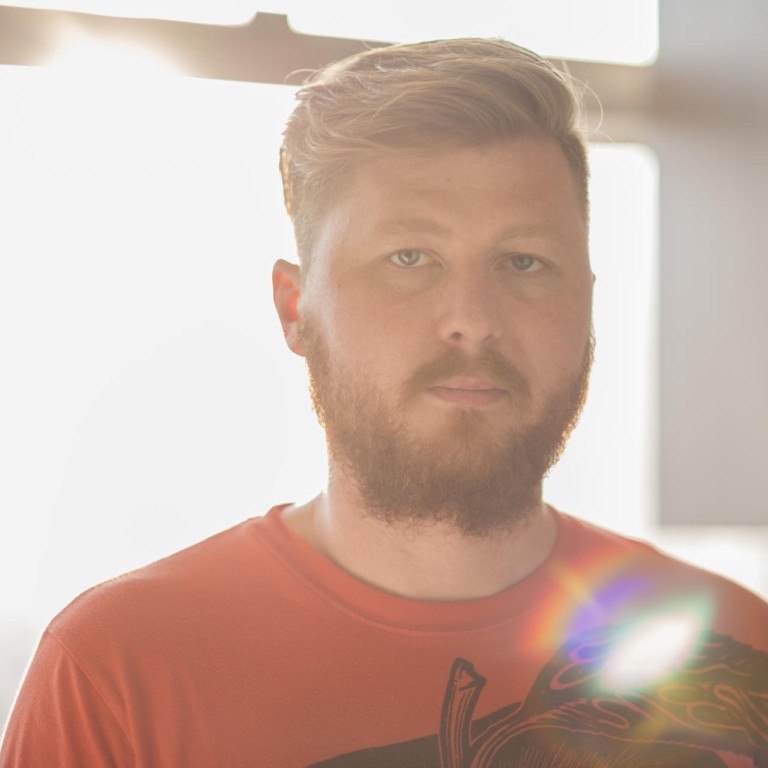
Canadian artist reunites with his inner rebel in Hong Kong
Peter Yuill might just be responsible for the most acute visual delineations of the post-industrial beauty of Hong Kong's urban landscape, but the Canadian artist started his career not so much painting buildings as painting on them.
The beautiful Japanese inks of his "Central Project" series transformed often ignored, grey urban areas into wire-frame Edens of glorious faded intensity. Then there were the madly detailed, photorealistic steampunk machine drawings of his "Fading Glory" pieces. Those gave way to a more abstract sensibility inspired by the symbols of European pagan religions, but it was buildings, and specifically daubing on them, that first bit him with the artistic bug.
Originally from just outside Toronto, Yuill became a graffiti artist aged 15, although he admits "artist" might be pushing it a bit. "Really it was what would be classified as pure vandalism. I just loved it - climbing buildings, walking around on rooftops, getting into train yards at night; it was one of the best times of my life. I was a rebellious teenager. I got arrested about 20 times, but I was never caught red-handed and so I was never charged."
His infatuation with the dangers of graffiti lasted for about a decade. Then, "I got tired of it. It's a lot less funny to get arrested at 25 than it is at 15. Also, a lot of the older guys doing it, I saw their life trajectory and didn't want it," he says.
Yuill graduated from his university studies in illustration at about the time the global financial crisis hit, and moving overseas began to look like a good idea. His girlfriend since university, Thierry Chow, is a Hongkonger whose family had moved to Canada ahead of the handover, so Hong Kong was their obvious choice. "We came to try it out and stayed," he says.
"I loved the cosmopolitan nature of the city; the chaos of the streets and the density of the place were huge attractions for me. I just thought this place was so cool. I'd had a romantic notion of Hong Kong before I visited, but when I first arrived I was living in a New Territories housing estate that didn't really live up to it. Then I visited Kowloon, and I thought to myself, 'This is wicked'."
Yuill had intended to work as a teacher, but his employer couldn't find enough work for him. "I learned very quickly that I hated teaching and wasn't very good at it," he says. "But it meant that I had a lot of spare time, so I walked around exploring for a few months and taking lots of photos, especially in Sham Shui Po and Mei Foo."
The result was his signature ink streetscapes, which for a while he tried to sell to more or less anyone he met, "just trying to make enough money to stay alive". That changed two years ago when he was picked up by The Cat Street Gallery in Sheung Wan.
I’m super-excited to see what this generation can accomplish. I think that the mainstream culture of Hong Kong hasn’t moved on to meet the needs of these younger people
"I'm past that now," he says of perhaps his best-known work. "Like graffiti, I feel like I've accomplished as much as I can with it. The streetscapes were pretty, but I felt that I wasn't saying anything with them. My work now is more personal to me."
That work is a phantasmagoria of all-seeing eyes and horned stags, Heath Robinson astrolabes and other ancient astronomical machinery, Hokusai-like waves and geometric lines. "I'm now super into paganism and Nordic religions. I grew up a lot in the country, surrounded by wilderness; I'd spend whole days wandering in the forest on my own. I feel a very strong connection to nature, and to old paganistic ideas of the spirit of the forest," Yuill says. "My family has half Danish and half Scottish ancestry. My mother was very proud to be Danish, and used to tell me we were descended from the Vikings."
His latest work also marks a renewed fascination with oils, after several years on Japanese inks. "I used to be an oil painter, but when I moved here I didn't have a studio, and ink and paper are very transportable. After five years, I've had to spend a few months re-teaching myself oil painting; it's something that takes a lifetime to perfect. I'm having much more fun with oil painting than I ever did with ink painting; I'm so much happier."
He's also happier living in Hong Kong: a born rebel, he finds Occupy Central to his liking, especially the people behind the protest. "It's interesting seeing a generation of kids who have different attitudes and priorities. I'd been thinking about moving back to Canada, but the passion and creativity of the students has inspired me, and now I wouldn't want to live anywhere else," Yuill says.
"I'm super-excited to see what this generation can accomplish. I think the mainstream culture of Hong Kong hasn't moved on to meet the needs of these younger people: Canto-pop is essentially the same as it was 20 years ago, and the TV soap operas haven't changed.
"There's been a social awakening - there are lots of discontented people who didn't realise before that they were part of a community, that there were other people who felt the same way, and maybe it's OK not to like parts of the mainstream culture.
"It's turning Hong Kong from a fake plastic city of Rolex watches and LV bags into a real city with a subculture of young people who are motivated to express themselves, to rebel, which is part of being a kid. It's very nice to see."
Perhaps that rebellious teenage Toronto graffiti artist never really did go away.

